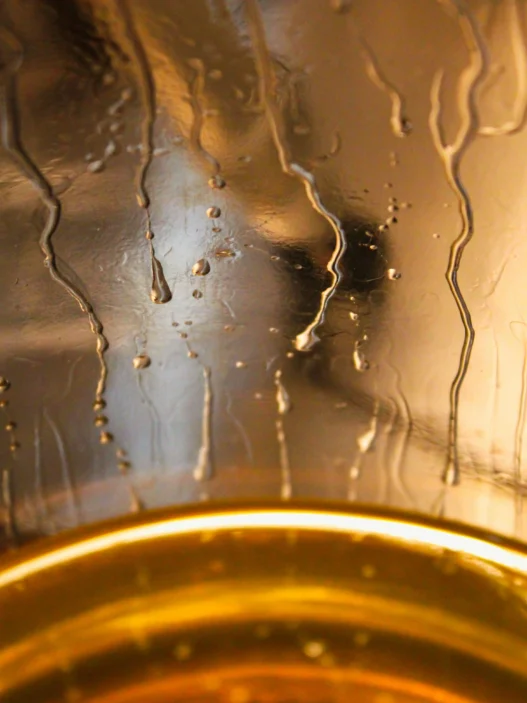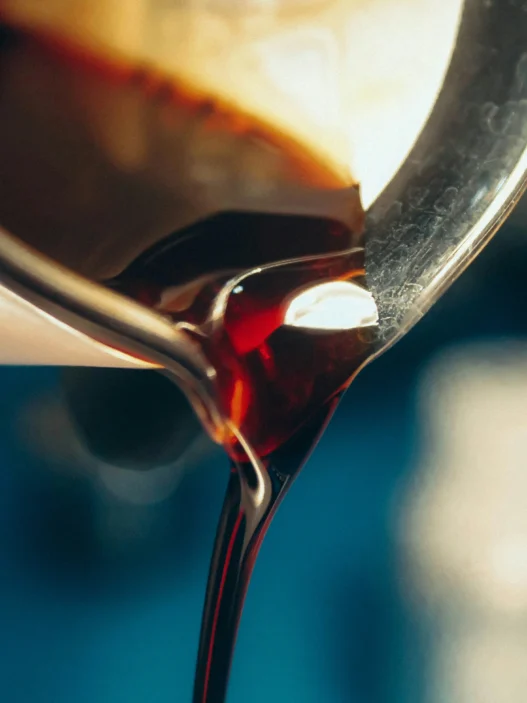Trilaurin, also known as trioctanoic acid glyceride, is a type of triglyceride that is commonly found in coconut oil and milk. Despite its technical name, Trilaurin plays a significant role in everyday life as a source of energy for our bodies. When we consume foods containing Trilaurin, our digestive system breaks it down into fatty acids, which are then used by our cells as a primary energy source. In this way, Trilaurin contributes to our overall energy levels and is an essential component of a balanced diet.
Table of Contents:
- 💡 Commercial Applications
- ⚗️ Chemical & Physical Properties
- 🏭 Production & Procurement
- ⚠️ Safety Considerations
- 🔬 Potential Research Directions
- 🧪 Related Compounds
💡 Commercial Applications
Trilaurin, also known as glyceryl trilaurate, finds various commercial and industrial applications due to its properties. It is commonly used as an emulsifier in food products, cosmetics, and pharmaceuticals. Trilaurin helps stabilize oil-in-water emulsions, making it ideal for use in products such as salad dressings, lotions, and creams.
In the realm of drug and medication applications, Trilaurin plays a significant role as an excipient in pharmaceutical formulations. It is often used as a carrier for poorly soluble drugs to enhance their bioavailability. Trilaurin’s ability to improve drug absorption and dissolution makes it a valuable ingredient in oral solid dosage forms like tablets and capsules.
Furthermore, Trilaurin is employed in the production of lipid-based drug delivery systems. These systems utilize the biocompatibility and biodegradability of Trilaurin to encapsulate and transport drugs within the body. This approach enhances the delivery of pharmaceutical compounds, particularly those with low water solubility or poor stability.
⚗️ Chemical & Physical Properties
Trilaurin, also known as glyceryl trilaurate, is a triglyceride with a pale yellow appearance and a faint odor. It is commonly found in coconut oil and palm kernel oil.
With a molar mass of approximately 891.43 g/mol and a density of about 0.894 g/cm³, trilaurin is comparable to common food items such as olive oil in terms of molar mass, but its density is higher than most food oils.
Trilaurin has a melting point of around 37°C and a boiling point of approximately 395°C. These values are similar to those of butter, but higher than those of vegetable oils like sunflower oil.
Trilaurin is insoluble in water, but soluble in organic solvents such as ethanol. It has a relatively high viscosity, similar to that of solid fats like cocoa butter.
🏭 Production & Procurement
Trilaurin, a type of triglyceride commonly found in coconut oil, is produced through the process of esterification. This process involves combining a molecule of glycerol with three molecules of lauric acid, yielding a single molecule of trilaurin.
Trilaurin can be procured through various means, including extraction from natural sources such as coconut oil through methods like fractional distillation or solvent extraction. Once obtained, trilaurin can be transported in its solid form or as a liquid in appropriate containers to prevent oxidation or other degradation.
In the transportation of trilaurin, it is crucial to ensure proper labeling and adherence to regulatory guidelines for the handling of lipid-based substances. This is to ensure the integrity of the product and compliance with safety protocols during transit to its intended destination.
⚠️ Safety Considerations
Safety considerations for Trilaurin should be taken into account due to the potential hazards associated with its use. When handling Trilaurin, it is important to wear appropriate protective equipment such as gloves, goggles, and a lab coat to prevent skin contact, eye contact, and inhalation of the substance. Additionally, Trilaurin should be stored in a cool, dry, well-ventilated area away from heat sources and incompatible materials to avoid potential chemical reactions or accidents.
Hazard statements for Trilaurin include “Causes skin irritation,” “Causes serious eye irritation,” and “May cause respiratory irritation.” These statements indicate the potential risks associated with exposure to Trilaurin, highlighting the importance of handling the substance with care and following recommended safety procedures to minimize the likelihood of adverse effects on health.
Precautionary statements for Trilaurin include “Wear protective gloves/eye protection,” “Avoid breathing mist/vapors/spray,” and “Wash hands thoroughly after handling.” These statements outline specific precautions that should be taken when working with Trilaurin to reduce the risk of exposure and ensure the safety of individuals handling the substance. Adhering to these precautionary statements is essential for protecting oneself and others from potential harm while using Trilaurin.
🔬 Potential Research Directions
Potential research directions for Trilaurin include further investigation into its properties as a triglyceride. Studies focusing on its potential applications in the food and pharmaceutical industries could yield valuable insights into its functionality and bioavailability. Additionally, research exploring the potential health benefits of Trilaurin, such as its role in metabolic processes or its effects on lipid metabolism, could provide valuable information for future applications.
Furthermore, studies examining the synthesis and production methods of Trilaurin may lead to advancements in the efficiency and scalability of its production. Exploring new bioengineering techniques or utilizing alternative feedstock sources for the production of Trilaurin could also be areas of interest for researchers. Understanding the factors that influence the yield and purity of Trilaurin could contribute to its commercial viability and market adoption.
Investigations into the potential interactions of Trilaurin with other compounds or materials could provide valuable insights into its compatibility and versatility in various applications. Collaborative research efforts involving interdisciplinary fields such as chemistry, biology, and materials science may uncover novel uses for Trilaurin in fields such as drug delivery, nutraceuticals, or bioplastics. Overall, exploring the diverse research directions of Trilaurin has the potential to yield significant advancements in various industries and scientific fields.
🧪 Related Compounds
One similar compound to Trilaurin based upon molecular structure is Tripalmitin. Tripalmitin is a triglyceride composed of three molecules of palmitic acid. Just like Trilaurin, Tripalmitin is a commonly found constituent in various plant and animal fats.
Another similar compound to Trilaurin is Trimyristin. Trimyristin is a triglyceride composed of three molecules of myristic acid. Trimyristin shares similar properties with Trilaurin due to the presence of three fatty acid chains in its molecular structure. It is also commonly found in natural fats and oils.
Lastly, another compound similar to Trilaurin is Triolein. Triolein is a triglyceride composed of three molecules of oleic acid. Like Trilaurin, Triolein plays a crucial role in biological systems as a source of energy storage. It is widely distributed in various plant and animal fats.





